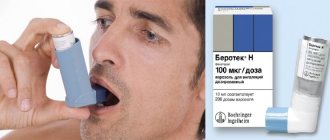Therapy for deviations in indicators
Adjusting your diet, moderate physical activity, and drug therapy will help return your blood pressure to normal values.
The diet is always agreed with the attending physician, because allergic reactions and chronic diseases can cause blood pressure imbalance.
Elevated systolic pressure readings are corrected by a healthy diet with a high content of vegetables, fruits, white meat, fish, dairy products, green and red tea in the menu.
Dishes made from complex carbohydrates will help increase diastolic pressure: durum pasta, cereals, whole grain bread. Physical activity should be dosed, with the exception of professional sports training, where the instructor monitors the athlete’s health indicators
Prolonged static postures lead to a decrease in blood pressure, so it is important to include dynamic breaks during the working day.
Medicines are prescribed from a minimum dose, and if necessary, the course is repeated with an increase or replacement of the drug. Therapy is carried out by a cardiologist or therapist, the choice depends on the severity and extent of the disease.
What affects blood pressure readings
Mean arterial pressure depends on many different factors. The indicator may even change during the day. For most people, blood pressure is higher in the evening than in the morning. But this applies only to those who lead a measured lifestyle - for those who like a fast pace of life, blood pressure rises in the evening due to excessive stress.
The following also contribute to increased blood pressure:
- large meals;
- physical exercise;
- stress;
- consumption of certain products (coffee, chocolate, alcohol).
But a sharp decrease in blood pressure can be caused by blood loss or a severe allergic reaction (anaphylactic shock). The pressure in such situations begins to rapidly decrease, collapse and then death can quickly occur. That is why such a condition is considered an emergency and requires immediate assistance from doctors.
High blood pressure most often provokes the development of a hypertensive crisis or stroke. Even if the increase is not sharp, but gradual, it still provokes the development of many negative consequences for the vascular wall due to the increased pressure on it.
Any sudden changes in blood pressure are dangerous for the body. Stably high or low blood pressure often poses less danger to life and health than a rapid jump of 30-40 units
That's why it's so important to try to avoid this. When blood pressure needs to be lowered or raised, it is necessary to choose only those methods by which this can be done gradually, without risk to health
All this applies to those situations when vascular tone increases or decreases sharply and then gradually returns to normal. But there are also a number of other reasons that provoke a constant deviation of blood pressure from the norm. The reasons will differ depending on whether a person has persistently high or low blood pressure.
Factors that provoke persistently elevated blood pressure are:
- overweight;
- atherosclerosis. Develops against the background of poor nutrition (excessive consumption of animal fats), which provokes an increase in cholesterol levels in the blood;
- diabetes, excess blood sugar;
- excessive physical activity.
Women over 50 years of age should also be considered at risk. Even without obvious reasons, their blood pressure will be higher than that of male peers. This is especially true in the presence of a hereditary predisposition to hypertension.
But constant hypotonicity of the vascular walls is provoked by:
- overwork, lack of sleep;
- moral exhaustion of the body;
- malnutrition, lack of essential elements in the body;
- dehydration;
- anemia, most often caused by significant blood loss.
Often hypotension is simply a hereditary feature of the body. If blood pressure does not drop to critical levels, then this is a normal condition that does not require any medical intervention.
When conducting research and analyzing the results, it is necessary to take all this into account. After all, it is clear that after a workout, an intense day of work or a too heavy lunch, the pressure will be higher than at normal times. Therefore, it cannot be said that deviations from the norm are stable and require complex treatment.
To draw conclusions about the presence of hypertension or hypotension, measurements must be made over a long period of time with a certain frequency. Only then will it be possible to say for sure that there is a permanent deviation from the norm.
If this is only an isolated case, then you just need to know how to bring blood pressure back to normal.
Age factors affecting blood pressure
In middle age, almost every person, regardless of health level, experiences dramatic changes in blood pressure.
For persons from forty-five to fifty-four, the normal value is multiplied by two.
Moreover, it is known that it is males who suffer most from high blood pressure.
As for, significant pressure surges in them are directly related to hormonal changes. They experience extremely high blood pressure levels later in life.
Concomitant pathologies
In addition to age, a systematic increase in pressure is provoked by metabolic disorders, kidney disease, bad habits, etc. Smoking provokes a narrowing of small blood vessels, which in the long term causes a decrease in the lumen of large arteries and, as a result, hypertension. When kidney function is impaired, the hormone aldosterone is produced, which also leads to an increase in blood pressure. There is a risk of hypertension in diabetics, whose blood vessels are especially prone to deposits on the inner walls. Timely detection and prevention of major diseases will allow you to maintain normal blood pressure and live an active life.
Video on the topic
What affects a person's blood pressure? An expanded list of causes of high blood pressure, each of which requires real and effective action:
This article contains detailed information about what determines a person’s blood pressure. The main factors influencing its level are also given here. To protect yourself from deteriorating health, you need to regularly visit a specialist, lead an active lifestyle, provide your body with proper and balanced nutrition, give up bad habits and protect yourself from stress. If necessary, you should take special medications to reduce high blood pressure. This will protect the body from the consequences of hypertension, which interferes with leading a normal lifestyle.
The information on the MyMedNews.ru website is for reference and general information, collected from publicly available sources and cannot serve as a basis for making a decision on the use of medications in the course of treatment.
MyMedNews.ru
And we also have
Primary and secondary hypertension: pathogenesis and factors determining the development of the disease
How to get the correct average
To correctly calculate MAP, you must enter the correct blood values.
Many adults do not follow the rules of measurement, as a result of which they receive an incorrect calculation of the average. One hour before measuring blood pressure and pulse, you must give up caffeine, strong tea, smoking, alcohol, and excessive physical activity. It is recommended to empty your bladder before the procedure. If it is overfilled, the readings will increase by 10 mm.
To obtain the correct result that corresponds to reality, several measurements are carried out. A person should be in a calm environment, a relaxed position.
Position yourself so that your elbow is at the level of your heart. During the manipulation, you cannot move, talk, wave your arms, etc. Then use a tonometer. Instructions are always included with the device. You can find tables on the Internet that describe the procedure step by step. Ideally, blood pressure is measured every day for one week.
Blood pressure deviation says:
- Constantly reduced DM and DD – hypotension.
- Constantly elevated blood pressure is hypertension.
When the readings jump up and down, this indicates lability of blood pressure. This is not a disease, but a symptom of the fact that malfunctions and pathological processes are observed in the body.
Average blood pressure can be determined using special medical devices or calculated based on other data. The upper and lower values tend to change due to a person’s age, however, MAP should always correspond to the average norm, which is not affected by age and other factors.
Blood pressure measurement
To independently calculate mean arterial pressure, you need to obtain reliable indicators of systolic and diastolic blood pressure. To do this, you must measure your blood pressure correctly. The most accurate results are obtained when using a mechanical tonometer. Measurements by electronic (automatic) devices have a small error.
See also What to do if your blood pressure fluctuates: sometimes high, sometimes low?
To obtain reliable data, you should not drink coffee, alcohol, or energy drinks an hour before the procedure. After intense movement, the cardiac cycle returns to a resting state gradually. You can measure your blood pressure after 20-30 minutes of rest. Before the procedure, you should empty your bladder - its fullness may distort the results obtained.
The measurement is taken while sitting in a calm, relaxed position. You should not put one leg on top of the other - this affects blood circulation throughout the body. The hand on which the mechanical or automatic tonometer is fixed should be relaxed. The cuff of the device must be exactly at the level of the heart. During the procedure, you cannot strain your muscles, talk, cough, or move. If it is not possible to measure blood pressure yourself, you should contact a medical facility. Having obtained the systolic and diastolic pressure indicators, you need to use special calculation formulas that will allow you to calculate the average blood pressure.
Attention! The accuracy of measurements in healthcare settings may be reduced in people with white coat hypertension. This is a psychosomatic syndrome that causes an increase in blood pressure in patients in the presence of doctors or nurses. If such a psychological reaction is suspected, blood pressure should be measured independently or using the method of daily automatic monitoring.
How to monitor your metrics
It is best to have your own blood pressure monitor at home and master the technique of measuring blood pressure. This is a simple procedure and anyone can learn it. The data obtained should be entered into a diary or table. There you can also briefly make notes about your health, heart rate, and physical activity.
Often arterial hypertension does not manifest itself by external signs until something provokes a crisis - a sharp increase in blood pressure. This condition has many life-threatening consequences, such as hemorrhagic stroke or heart attack. It is advisable to get into the habit of regularly measuring your blood pressure after 40-45 years. This will help significantly reduce the risk of developing hypertension.
Treatment
It is known that blood pressure levels are determined in the clinic.
And all because many patients are not able to notice pressure fluctuations in their body. As a rule, in most cases, hypertension is asymptomatic. The presence of hypertension may also have no effect on overall well-being.
To avoid unnecessary problems, you should get a tonometer and measure your blood pressure yourself. This will allow you to be armed and protected from the negative manifestations of this disease.
An important point in improving your health is normalizing your daily routine, proper nutrition, an active lifestyle, psychological relief, and giving up bad habits.
How to calculate mean arterial pressure
Before calculating mean arterial pressure, you need to measure the upper and lower values. This can be done at home using a tonometer. The measurement is carried out in a calm state to eliminate false results.
MAP allows you to find out how the organs of the whole body function, to what extent they are saturated with blood and nutrients. If a decrease is observed, then they speak of a circulatory disorder in the body, which leads to diseases of the kidneys, brain, atrophy and other pathologies of a chronic nature.
Of course, ideally this indicator is calculated by the attending physician, who takes into account other parameters of the body’s condition. This is the only way to find out an accurate idea of the functioning of the heart and the entire vascular system.
Calculation methods:
- The simplest formula for blood pressure is 2(BP)+(SD)/3. To calculate, you need to multiply the lower indicator by two, add the systolic value to it, then divide the resulting result by three. The resulting MAP is approximate and is calculated in millimeters of mercury.
- Another formula: 1/3 (SD-DD) + DD. The renal value is subtracted from the systolic parameter, the difference is divided by three and the diastolic value is added. For example, if the initial blood pressure is 120/88 mm, then the formula is 1/3(120-88)+88=10+88=98 mm.
- Can be calculated using the formula SV × OPSS. CO is cardiac output, and the second value is peripheral vascular resistance. You cannot calculate it yourself; a special device is required. The calculation is carried out under stationary conditions.
You don’t have to calculate the data yourself; the program will do it for you together. There are various mean blood pressure calculators available on the Internet.
It is enough to enter SD and DD to get the result.
Formulas for determining blood pressure
There are several ways to calculate mean arterial pressure. Doctors use specific formulas specifically designed for this purpose. But before you start determining the average, you need to measure your blood pressure.
Then you can use one of the following formulas: (2(DBP)+SBP)/3 or 1/3(SBP – DBP) + DBP. Everything is very clear here. DBP is the lower pressure, SBP is the upper pressure.
There is also another formula. It looks like this: SV × OPSS. Here CO means cardiac output. It is measured in l/min. TPVR is peripheral vascular resistance, measured in mmHg.
Normal mean blood pressure
The value of average blood pressure is considered normal when a figure is obtained in the range from 85 to 95. Doctors assume that there is a deviation of the upper and lower values from the norm. In this case, a range from 70 to 110 is considered acceptable for average pressure, taking into account factors that are not related to the presence of pathologies.
These include:
- taking medications;
- head injuries;
- aortic aneurysm;
- sepsis.
In most cases, the causes of pressure deviations from the norm are the use of vasoconstrictor medications and the use of vasodilators. The norm of average blood pressure in adults, children, and pregnant women is the same.
You need to know that with a value of 60, a person has insufficient blood supply, which can be fatal.
In case of significant deviations, the patient is prescribed various types of examinations according to his age, on the basis of which further conclusions are drawn about the presence of pathological changes in the body.
The main reasons for pressure fluctuations in the body
The main reason for surges in blood pressure is an unhealthy lifestyle. Even minor alcohol abuse or lack of physical activity during the day can lead to changes in blood circulation in the body. In women, hormonal imbalances and age are often the causes of blood pressure surges.
What determines blood pressure fluctuations:
- Improper lifestyle (sedentary lifestyle, difficult working conditions, poor sleep);
- Abuse of alcohol and nicotine;
- Unhealthy diet (spicy, salty, unhealthy);
- Chronic diseases: heart disease, atherosclerosis, diabetes, vascular pathology, kidney disease, etc.;
- Overweight and obesity;
- Hereditary predisposition;
- Stress, nervous disorders, depression;
- Heavy physical activity in sports or at work;
- Spending a long time at the computer;
- Sudden change in weather or air temperature (sauna);
- Taking medications;
- Incorrect distribution of work and rest.
- The age of the person.
Table Risk factors for hypertensive patients
| Demographic characteristics and laboratory parameters |
| Genderª (men > women) |
| Ageª (≥ 55 years - men, ≥ 65 years - women). |
| Smoking (current or past)ª (IB) |
| Total cholesterolª and LDL cholesterol levels |
| Increased uric acid levels in the blood |
| Diabetes mellitusª |
| Overweight or obesity (IA) |
| Family history of CVD at a young age (<55 years for men and <65 years for women) |
| Development of hypertension at a young age in parents or in the family |
| Early menopause |
| Sedentary lifestyle |
| Psychological and socio-economic factors |
| Heart rate (resting value >80 beats/min) |
| Asymptomatic organ damage mediated by hypertension |
| Arterial stiffness: Pulse pressure (in elderly patients) ≥60 mm Hg. Carotid-femoral PWV >10 m/s |
| ECG signs of LVH (Sokolow-Lyon index >35 mm, or R wave amplitude in lead aVL ≥11 mm, Cornell product >2440 mm×ms or Cornell voltage index >28 mm for men and >20 mm for women) |
Echocardiographic signs of LVH:
|
| Microalbuminuria (30-300 mg/24 h) or increased albumin-creatinine ratio (30-300 mg/g; 3.4-34 mg/mmol) (preferably in morning urine)ᵇ |
| Moderate CKD with GFR >30-59 ml/min/1.73 m2 (BSA) or severe CKD with GFR <30 ml/min/1.73 m2b |
| Ankle-brachial index <0.9 |
| Severe retinopathy: hemorrhagic or exudative, papilledema |
| Diagnosed CVD or kidney disease |
| Cerebrovascular diseases: ischemic stroke, hemorrhagic stroke, TIA |
| IHD: MI, angina, myocardial revascularization |
| Presence of atheromatous plaques on imaging |
| Heart failure, including HFpEF |
| Peripheral artery disease |
| Atrial fibrillation |
_________________
| CV risk degree | The presence of at least one of the following criteria: |
| Very tall | Established diagnosis of CVD (according to clinical data or indisputably according to imaging data):
|
| High |
LVH due to hypertension;
|
| Moderate |
|
| Short |
|
Clinical picture
What doctors say about hypertension
I have been treating hypertension for many years. According to statistics, in 89% of cases, hypertension results in a heart attack or stroke and death. Currently, approximately two thirds of patients die within the first 5 years of disease progression.
The next fact is that it is possible and necessary to reduce blood pressure, but this does not cure the disease itself. The only medicine that is officially recommended by the Ministry of Health for the treatment of hypertension and is also used by cardiologists in their work is NORMIO. The drug acts on the cause of the disease, making it possible to completely get rid of hypertension. In addition, within the framework of the federal program, every resident of the Russian Federation can receive it for FREE
.
It is calculated according to certain formulas - at home or in the hospital. Its variability is ideally 80-95 mmHg. This indicator does not judge the functionality of the heart. For a complete picture, it is necessary to take into account cardiac output, stroke volume and cardiac index.
In medicine there is a term called pulse pressure. It is calculated simply: the diastolic value is subtracted from the systolic number. Normally it is up to 50 mm. The optimal option ranges from 35 to 45 mmHg.
Normal pressure
As blood moves through the systemic circulation, pressure levels decrease. Characteristics of blood pressure depending on the type of vessels:
- in the aorta - 140/90 (this is considered normal);
- in large vessels - 120/75, in arterioles - 40 mm Hg, up to 10 mm Hg. Art. - in capillaries;
- in the veins, blood pressure continues to decrease, while in large veins the indicator may become negative.
Normal blood pressure in a person depends on habits, activities, life schedule, body characteristics, and water consumption. The normal level undergoes changes under stress, emotional and physical stress in older people. Upper blood pressure in children is calculated using the formula 50+2f, where f is the baby’s age. A scale that determines average blood pressure for older people, adults and adolescents:
During life, blood pressure is not a constant value; it fluctuates depending on the state of health, load, volume of water drunk, stress or age. The body brings it back to normal. When the regulatory mechanism is disrupted, blood pressure rises. With constantly high blood pressure, hypertension occurs, then hypertension. Low blood pressure develops hypotension. If you know the specifics of these changes, you can avoid serious illness in the future.
Treatment of low blood pressure
There is no exact drug treatment regimen for treating low blood pressure. Such problems are very often based on vegetative-vascular dystonia. This is a special phenomenon that is completely impossible to cure; everything goes away on its own. Until this happens, you can only correct the situation and do everything to prevent the condition from worsening.
As the main treatment for this condition, it is recommended to add healthy foods to the diet, diluting them with complex carbohydrates. Such a diet will provide the necessary energy and eliminate the symptoms of low blood pressure - apathy and weakness.
Don't overuse sweets. They increase blood pressure and provide energy, but this is a short-term effect that can lead to weight gain and the development of dangerous problems in the functioning of the pancreas.
It is equally important to establish a daily sleep and rest schedule, avoid nervous stress, psychological and physical stress, as this significantly worsens health. To saturate the body with energy and fill the organs with useful oxygen and avoid the development of atrophic conditions, you need to introduce light physical activity into your lifestyle.
Medications are often required to correct high and low blood pressure. Medicines must be prescribed by a doctor. Self-medication is unacceptable here.
Formulas and methods for calculating averages
There are several options and methods for calculating mean arterial pressure. If the measurement is carried out in a clinic, special devices are used. When taking measurements at home, you can use special formulas. Here are two relatively simple formulas for calculating a person's blood pressure:
- First, diastolic and systolic pressure levels are measured. From the highest digital indicators you need to subtract the lower blood pressure. The indicator must be divided by three. A digital indicator of lower pressure is added to the total.
- The average can be calculated using the method of Wetzler and Boger. In this case, both blood pressure indicators are initially measured. The top data is multiplied by 0.42, then the bottom by 0.58. Both results obtained are summed up.
If, as a result of such calculations, the result is 80-95 mm, we can judge that the person’s condition is quite normal. If any deviations occur, the doctor conducts an additional examination to identify dangerous pathologies.
The formulas presented to your attention can be classified as the simplest; they can be used by a simple layman who has a tonometer at his disposal and does not have a special medical education. You can do without using formulas. It’s enough just to take measurements every evening and every morning and keep a corresponding schedule. If the resulting graph indicates that the indicators go beyond normal limits, you should contact a therapist to prescribe appropriate therapy.
Indications for use
The procedure is prescribed to patients who complain of:
- fatigue;
- headaches, dizziness;
- decreased vision, spots before the eyes;
- noise or ringing in the ears, stuffy ears.
ABPM can also be prescribed to a person who has no unpleasant symptoms, but when the doctor measures the blood pressure, it is elevated. The reason for this may be the “white coat” phenomenon: this is an individual characteristic that is expressed in a specific psychological reaction to doctors. A person with the “white coat” phenomenon begins to worry excessively during any medical procedures, so his blood pressure and heart rate increase. Measuring blood pressure and heart rate using daily monitoring allows us to exclude the influence of this phenomenon on the diagnosis.
Do atmospheric pressure and weather affect
Many people are weather dependent. Changes in atmospheric pressure affect their general condition and blood pressure.
| Wind outside | Headache, anxiety, drowsiness |
| Atmospheric pressure surges | Symptoms of vegetative-vascular dystonia |
| Sun | Improved mood, normal blood pressure |
| Storm | Hypertensive crisis |
If there is a sharp increase or decrease in blood pressure, a consultation with a general practitioner is required.
Author of the article Svetlana Anatolyevna Ivanova, general practitioner
Calculation methods
Hypertension is not a death sentence!
It has long been a well-established opinion that it is impossible to get rid of HYPERTENSION forever. To feel relief, you need to continuously drink expensive pharmaceutical drugs. Is it really? Let's figure out how hypertension is treated here and in Europe...
Mean blood pressure refers to the pressure of a complete cardiac cycle. On the rubber cuff of the tonometer, this blood pressure will determine the level that is equal to the diastole pressure when the lumen is closed.
In medical institutions, the method of arterial oscillography is used. With its help, it is possible to record oscillatory processes occurring in arterial vessels. Oscillography can provide information about the functionality of the cardiovascular system.
There are five ways to independently calculate average pressure indicators for men and women without using expensive equipment:
- standard formula;
- Hickam's formula;
- Wetzler and Boger formula;
- Stavitsky's formula.
The standard formula provides for the following calculation: the lower blood pressure figure is subtracted from the upper blood pressure value, and the resulting difference is divided by 3 and added to the lower pressure reading. The norm is if the result is from 80 to 95.
It is calculated a little differently using Hickam's formula. In this case, the pulse pressure is divided by the number 3, and the lower pressure or minimum is added.
According to the Wetzler and Boger formula, the average pressure should be calculated as follows:
- the number 0.42 is multiplied by the upper pressure or maximum;
- 0.58 multiplied by the lower pressure is added to the result.
Stavitsky formula: lateral systolic blood pressure is multiplied by the systole time (in seconds), and then the minimum diastole pressure (in seconds) is added. The result is divided by the time of the cardiac cycle.
The average pressure can be easily determined using special equipment based on other data. Even when the upper and lower pressure readings change depending on age, the average value should always remain the same.
Prevention and recommendations
To keep blood pressure within normal limits, you should follow the recommendations of doctors:
- Introduce a lot of fresh vegetables and fruits into your diet. They contain a large amount of vitamins and beneficial elements necessary for normal heart function. Complex carbohydrates will relieve the heart muscle.
- Eat more fish and protein.
- Minimize your consumption of coffee and black tea as they contain high amounts of caffeine.
- Play sports, walk more in the fresh air.
- Avoid sweets, as they lead to extra pounds and the development of pancreatic diseases.
- Rest after a hard day should not be neglected; it is important that the body recovers from physical and mental stress.
- Consume as many fermented milk products as possible. They help not only improve intestinal function, but also have a beneficial effect on the functioning of the heart.
To prevent a heart attack, doctors prescribe special medications. They help normalize blood pressure, improve blood circulation, strengthen blood vessels and improve the general condition of the patient. Medicines are prescribed only by a specialist. Self-medication is unacceptable.
Every person should know how to find average pressure. His indicators indicate his state of health. Deviations from the norm, as a rule, indicate the development of pathology. In this case, you should consult a doctor to undergo an examination and determine the reason for the change in values. If a disease is detected, adequate treatment should be started immediately.
Doctors recommend
For effective treatment of hypertension at home, experts advise Phytolife
. This is a unique tool:
- Normalizes blood pressure
- Prevents the development of atherosclerosis
- Reduces sugar and cholesterol levels
- Eliminates the causes of hypertension and prolongs life
- Suitable for adults and children
- Has no contraindications
Manufacturers have received all the necessary licenses and quality certificates both in Russia and in neighboring countries.
We offer a discount to readers of our site!
Do you still think that it is impossible to cure hypertension?
Hypertension, unfortunately, always leads to heart attack or stroke and death. For many years, we only stopped the symptoms of the disease, namely high blood pressure.
Only constant use of antihypertensive drugs could allow a person to live.
Now hypertension can be CURED; this is available to every resident of the Russian Federation.
Was the article helpful?
Rate the material on a five-point scale!
If you have any questions or want to share your opinion or experience, write a comment below.
How is blood pressure formed?
The blood in the vessels has a mechanical effect on their walls. Purely technically, there is always pressure in the arteries and veins. But when measuring it with a tonometer, other points are also important.
When the heart muscle contracts, blood is ejected from the ventricles into the vessels. This impulse creates the so-called “upper” or systolic pressure. Then the blood is distributed through the vessels, and the minimum level of their filling, at which the heartbeat is heard in a phonendoscope, gives the “lower” or diastolic indicator. This is how the result is formed - a figure reflecting the state of the body at the moment.
Methods for measuring blood pressure
Blood pressure is one of the main parameters of the system.
It, unlike atmospheric, is measured in millimeters of mercury, and not in pascals. There are two blood pressure indicators:
- Systolic blood pressure (SBP) is the level of blood pressure at the moment of maximum contraction of the heart. It is created by left ventricular stroke volume, ejection velocity, elasticity and aortic diameter. Normal values are 100-139 mmHg.
- Diastolic blood pressure (DBP) - displays the pressure at the moment of greatest relaxation. DBP depends on the duration of diastole and TPVR - total peripheral vascular resistance. The DBP value is 60-89 mmHg.
The invasive (direct) method of measuring blood pressure is applicable exclusively in hospital settings, for example, during operations and in the intensive care unit. For continuous monitoring, a catheter with a sensor is inserted into the radial artery (at the wrist), and the data is displayed on the monitor. Despite the undeniable assistance in conditions where a person is in serious condition, thrombosis, bleeding and infection of the puncture site may occur.
Among doctors and ordinary users, non-invasive devices and methods are common that make it possible to quickly, without causing discomfort and bloodlessly determine the level of a patient’s blood pressure.
Blood flow and blood pressure
Blood constantly circulates through the vessels. The volume that passes through a vessel per unit time is called blood flow. The amount of blood flow depends on the hydrodynamic resistance of the blood flow and the pressure difference at the beginning and end of the vessel. The minute volume of an adult's heart is 5 l/min. The maximum pressure is in the pulmonary artery and aorta; the further from the heart, the lower it is.
The norm is different for different types of vessels.
The volume of blood flow in the body is determined by the types of tissues: some muscles or organs need 20 times more blood than usual when moving or exercising. However, the volume of blood flow per minute can increase only 4-7 times. To prevent a deficiency of nutrients in the tissues, internal mechanisms redistribute the flow to organs or muscles with an increased need for blood supply during this period of time. There is no pulse in the venous vessels; blood movement occurs due to the venous valves, muscle contractions and breathing. The breathing process ensures that blood is pumped from the legs to the chest. Types of circulation - pulmonary (small circle) and systemic (systemic circulation). 84% of the total blood volume circulates in the systemic circle.
What do blood pressure indicators depend on?
The main factors influencing the constant value of blood pressure:
- condition of the heart muscle;
- elasticity of the walls of blood vessels;
- person's age;
- body weight;
- chronic kidney disease;
- smoking;
- alcoholism;
- constant use of medications of certain groups (diuretic, antihypertensive, sedatives).
A person’s blood pressure becomes higher with age - this is normal as long as the numbers do not go beyond physiological limits. Excess weight puts increased stress on the cardiovascular system. Kidney disease leads to increased blood volume. Alcoholism and smoking reduce the elasticity of blood vessels. This affects constant blood pressure values.
A temporary increase or decrease in blood pressure can be caused by the following reasons:
- Dream. When resting at night, blood pressure decreases; taking measurements immediately after waking up is not recommended. You need to wait 1 hour to get reliable readings.
- Drinking coffee, strong tea, alcohol or energy drinks.
- Smoking.
- Eating salty, spicy foods, overeating.
- Increased physical activity: running, exercise equipment, climbing stairs.
- Stress, nervous excitement.
- Blood loss: When you bleed, your blood pressure drops. In critical cases this can lead to death.
- Taking sedatives, stimulants, antispasmodics, diuretics.
When calculating the average pressure, negative factors can distort the result obtained. For greater accuracy, measurements and calculations should be repeated 2-3 times a day. Before measuring blood pressure to calculate the average value, you need to avoid factors that influence the results for an hour. Measurements under the influence of stress, physical activity, and medications provide incorrect data. They cannot be used to calculate average blood pressure.
Systolic, diastolic, pulse and mean arterial pressure are important vital signs. If they deviate from normal values, you should immediately consult a doctor for examination and treatment.
What main factors does blood pressure depend on?
It is known that in addition to heredity, which can be fundamental in any case, there are other probable factors that have a strong influence on the occurrence of this phenomenon in any person.
Being overweight
It is now known that obesity can lead to extremely high blood pressure.
This is explained by the fact that with obesity, a person’s cardiovascular system experiences heavy loads.
To supply all organs and tissues with blood, the heart muscle, arteries, veins and capillaries need to work in emergency mode.
As a result, this leads to severe surges in blood pressure. Therefore, in order to get rid of hypertension, you need to immediately sort out your own nutrition in order to quickly reduce your weight to a normal level.
You can achieve excellent results in the fight against excess weight through actions such as:
- increased load on the entire body . As a result, the resulting energy, which is taken from food, will be spent much more efficiently, using the body’s existing reserves.
- reducing the amount of food consumed . In order to achieve this, you need to carefully consider your diet: eat food in smaller portions several times a day. At the same time, your lifestyle can be left the same, without drastic changes.
Also, many experts recommend using these two options, which will help in the effective treatment of hypertension. In addition, this will give the patient a unique opportunity to ignore some psychological factors affecting blood pressure levels.
Excessive salt abuse
As you know, this substance enters the body with food.
Numerous studies have revealed that this food product in many cases becomes the main cause of serious pressure surges.
If you significantly reduce the amount of salt consumed per day to 300 mg, then this will help to avoid increasing blood pressure to the limit point.
In addition, this will avoid the formation of blood clots in the vessels. But, unfortunately, at the moment it is impossible to test the sensitivity of each organism to sodium salts.
If a person is obese or short of breath, this is already an indicator that there is excess salt in the body. In this case, you need to try hard to completely eliminate it from your daily diet. Well, if it doesn’t work out, then at least reduce the amount of this product consumed.
Nicotine abuse
It is also one of the factors that determines blood pressure.
It is known that nicotine in large quantities can cause spasms in blood vessels.
It is because of this that hypertension can appear. According to experts, smokers have an incredibly high risk of ischemia and atherosclerosis.
Alcohol
If you regularly abuse alcohol-containing drinks, you can bring the body closer to increasing the tone of the sympathetic nervous system.
The result of this is the appearance of hypertension.
In addition, people who are constantly intoxicated have an extremely high risk of heart attack, hypertensive crisis and other serious diseases of the cardiovascular system.
Doctors recommend completely abstaining from alcoholic beverages.
Stress
If we talk about what else affects a person’s blood pressure, it should be noted that being in constant tension can also play a fatal role.
Experts say that if a person constantly experiences anxiety or stress throughout the day, then his blood pressure level increases significantly.
These adverse events for human health can await him at home, at work and even on the street. Therefore, you should protect yourself as much as possible from these undesirable phenomena.
If this cannot be done, then you should visit specialists more often and undergo special examinations. As a result, the doctor will prescribe medications to control blood pressure levels.
Decreased physical activity
It is known that insufficient physical activity can also lead to the development of this disease.
This article contains pictures showing how blood pressure changes under the influence of certain factors. This will allow you to learn more about the influence of unfavorable factors on a person’s blood pressure level.
The effect of a sedentary lifestyle on health can be explained as follows: when muscle tone is minimized, the number of heart contractions, accordingly, decreases. It begins to quickly consume all available energy, making the body less resilient.
If the patient does not expend all the energy entering the body along with food, this will lead to the deposition of subcutaneous fat. It is also worth noting that in this case, blood clotting will become less efficient. As a result, this can lead to the formation of blood clots.
Every person should know what factors blood pressure depends on in order to bring it back to normal by eliminating these unfavorable phenomena. The most important point in improving your health is regular physical activity to improve your heart function.
Conclusion
It is important to consider that some people have high or slightly low blood pressure throughout their lives; this is their “working” pressure at which they feel normal. It’s another matter if the indicators have changed in any direction, which indicates the presence of cardiovascular and other pathologies
As for average blood pressure, if it is below 60, it is dangerous to health. The fact is that this indicator indicates the supply of vital organs with blood, and for their normal performance the indicator is cf. Blood pressure should be above 60.
Among the factors due to which average blood pressure data may differ from the norm, it is necessary to note not only diseases of the internal organs, but also the use of medications. Therefore, when prescribing certain medications, the doctor finds out from the patient whether he is taking any drugs, so as not to cause a cumulative effect.










